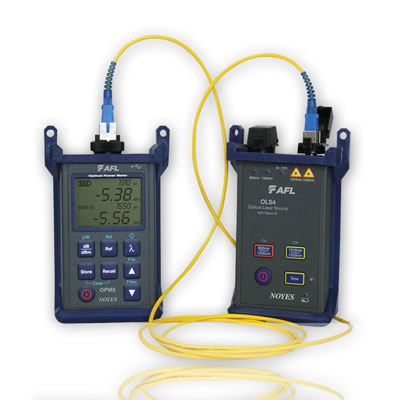The Role of Optical Fiber Testing in Ensuring Quality and Efficiency in Connection Solutions
In today's rapidly advancing digital landscape, the importance of optical fibre screening can not be overstated, as it serves as a keystone for making sure the quality and performance of connectivity solutions. As innovation proceeds to advance, the future of optical fibre testing postures interesting obstacles and chances that warrant closer evaluation.
Importance of Optical Fiber Screening
The significance of optical fiber screening can not be overstated in making sure the honesty and efficiency of communication networks. As the foundation of modern telecommunications, optical fibres facilitate high-speed data transmission, making their dependability critical to operational success. Examining serves as a positive action to recognize possible issues such as signal loss, depletion, and physical damage, which can compromise network performance.
Regular testing permits for the verification of setup high quality and the detection of issues that could affect data stability - ofda. By employing extensive screening methods, network drivers can mitigate the risks connected with network failures, including downtime and monetary losses. Optical fibre testing guarantees compliance with industry criteria and regulations, enhancing the overall quality of solution given to end-users.
Inevitably, the organized analysis of optical fibers adds to the long life and performance of interaction systems. It allows stakeholders to make informed decisions concerning maintenance, upgrades, and troubleshooting. In a landscape where data is increasingly vital, focusing on optical fiber testing is vital to sustaining robust and efficient connectivity remedies, therefore supporting the demands of modern digital settings.
Kinds of Optical Fibre Examinations
Different testing approaches are utilized to guarantee the functionality and reliability of optical fibers within communication networks. These examinations can be extensively categorized right into two major kinds: installation examinations and maintenance examinations.
Setup examinations are carried out promptly after the setup of optical fiber cable televisions to verify their efficiency and integrity - optical fibre diameter analyser. The most usual installation examinations include Optical Time-Domain Reflectometry (OTDR) examinations, which assess the top quality of the fibre by determining mistakes or breaks, and end-to-end loss tests, which gauge the total optical loss from one end of the fiber to the other
Upkeep tests, on the other hand, are executed regularly to ensure continuous performance and spot potential problems over time. These consist of visual assessment, which checks for physical problems or improper installments, and continuity tests, which verify that the signal can pass via the fibre without disturbance.
Furthermore, progressed tests such as Polarization Mode Diffusion (PMD) and Chromatic Diffusion (CD) examinations can be conducted to examine the fiber's performance under numerous problems. By employing these diverse screening approaches, service technicians can keep high standards of high quality and integrity in optical fiber networks.
Advantages of Regular Evaluating
Routine screening of optical fibres plays an important role in keeping the general efficiency and reliability of communication networks. By conducting regular assessments, organizations can ensure that their fibre optic installations satisfy industry requirements and operate effectively. This aggressive technique aids to recognize potential weaknesses and destruction with time, enabling for prompt interventions before issues intensify.

Cost-effectiveness is one more benefit. By addressing minor issues early, organizations can avoid the high prices related to major repair work or system failings. Regular testing likewise cultivates conformity with regulatory requirements, ensuring that the network sticks to needed safety and performance requirements.
Typical Issues Identified
Determining usual problems in optical fiber networks is important for keeping optimum efficiency and reliability. Various variables can add to disturbances, consisting of physical damage, poor installation practices, and environmental influences.
Physical damages, such as bends, breaks, or abrasions, can substantially degrade signal high quality. Inappropriate installation methods, consisting of excessive tension or poor securing of cords, might bring about increased attenuation and loss of connection. In informative post addition, environmental aspects such as temperature level fluctuations, moisture access, and rodent interference his comment is here can endanger the stability of the fibre.
Adapter concerns additionally often occur, with incorrect positioning or contamination leading to increased insertion loss. Splicing errors can introduce substantial signal deterioration if not carried out with precision.

Dealing with these common issues with routine optical fibre screening not only improves network dependability yet also optimizes total efficiency, making certain that connectivity solutions stay durable and efficient.
Future Fads in Testing
As the demand for high-speed connectivity remains to climb, the future of optical fibre testing will increasingly concentrate on automation and advanced analytics. The integration of artificial intelligence (AI) and artificial intelligence (ML) in screening processes will certainly make it possible for more effective information analysis and anticipating maintenance, reducing downtime and boosting general network dependability. Automated screening solutions will certainly simplify the examination and accreditation of fiber networks, decreasing human error and increasing testing throughput.
One more significant pattern is the fostering of remote screening technologies. As the release of fibre networks expands into remote and underserved areas, remote screening capacities will enable specialists to check and diagnose network problems without physical presence, thus minimizing operational expenses and enhancing feedback times.
Furthermore, there will be a change towards more detailed testing requirements that encompass not only typical loss dimensions however additionally efficiency metrics such as latency and data transfer use. This alternative technique will certainly help with much better network monitoring and optimization techniques.
As these trends progress, the optical fiber testing landscape will not just improve the quality and performance of connectivity options however also sustain the expanding intricacies of modern communication networks.
Verdict
In verdict, optical fiber testing serves visit this page as a basic part in keeping the stability and effectiveness of communication networks. The continuous dedication to routine testing not only boosts data transmission but likewise straightens with sector standards, cultivating dependability in network facilities.